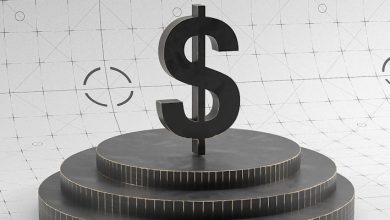How to Read Crypto Charts: A Step-by-Step Guide

- Understanding the Basics of Crypto Charts
- Choosing the Right Time Frame for Analysis
- Identifying Key Patterns and Trends
- Utilizing Technical Indicators for Better Analysis
- Interpreting Candlestick Patterns for Trading Signals
- Practical Tips for Reading Crypto Charts Like a Pro
Understanding the Basics of Crypto Charts
Cryptocurrency charts are essential tools for traders and investors to analyze price movements and make informed decisions. Understanding the basics of crypto charts is crucial for anyone looking to navigate the volatile world of digital assets.
One of the most common types of crypto charts is the candlestick chart. This type of chart provides a visual representation of price movements over a specific period of time. Each candlestick typically represents one day, with the body of the candle showing the opening and closing prices, and the wicks indicating the high and low prices during that period.
Another important element of crypto charts is the time frame. Traders can choose different time frames, such as 1-hour, 4-hour, daily, weekly, or monthly, depending on their trading strategy and goals. Shorter time frames are ideal for day traders, while longer time frames are more suitable for long-term investors.
It’s also essential to pay attention to volume when analyzing crypto charts. Volume represents the number of assets traded during a specific period, indicating the level of market activity. High volume typically confirms the validity of price movements, while low volume may signal a lack of interest from market participants.
In addition to candlestick charts, traders can also use other types of charts, such as line charts and bar charts, to gain different perspectives on price movements. Each type of chart has its advantages and disadvantages, so it’s essential to experiment with different chart styles to find the one that works best for you.
Choosing the Right Time Frame for Analysis
When it comes to analyzing crypto charts, choosing the right time frame is crucial for making informed decisions. The time frame you select will determine the amount of data shown on the chart and can have a significant impact on your analysis.
If you are a long-term investor, you may want to focus on longer time frames such as daily or weekly charts. These charts provide a broader view of the market trends and can help you identify major support and resistance levels over an extended period.
On the other hand, if you are a day trader or a short-term investor, you may prefer to use shorter time frames such as hourly or even minute charts. These charts show more detailed price movements and can help you spot short-term trading opportunities.
It’s essential to consider your trading style and goals when choosing a time frame for analysis. Experiment with different time frames to see which one works best for you and provides the most relevant information for your trading strategy. Remember, there is no one-size-fits-all approach, so be open to adjusting your time frame based on market conditions and your evolving trading style.
Identifying Key Patterns and Trends
Identifying key patterns and trends in crypto charts is essential for making informed decisions when trading cryptocurrencies. By analyzing historical price data, traders can spot recurring patterns that indicate potential future price movements. Some common patterns to look out for include head and shoulders, double tops, triangles, and flags. These patterns can help traders predict whether the price of a cryptocurrency is likely to increase or decrease in the near future.
In addition to patterns, it is also important to identify trends in crypto charts. Trends can be classified as either upward (bullish), downward (bearish), or sideways (neutral). By understanding the current trend, traders can better predict the direction in which the price of a cryptocurrency is likely to move. Trend lines can be drawn on charts to visually represent the direction of the trend, making it easier for traders to make informed decisions.
It is crucial for traders to pay attention to both patterns and trends when reading crypto charts. By combining the analysis of patterns with an understanding of trends, traders can develop a more comprehensive view of the market and make better-informed trading decisions. Remember to always conduct thorough research and analysis before making any trading decisions in the volatile cryptocurrency market.
Utilizing Technical Indicators for Better Analysis
When it comes to analyzing crypto charts, utilizing technical indicators can provide valuable insights into market trends and potential price movements. These indicators are mathematical calculations based on historical price and volume data, helping traders make informed decisions.
One commonly used technical indicator is the Moving Average, which smooths out price data to identify trends over a specified period. By comparing different moving averages, such as the Simple Moving Average (SMA) and the Exponential Moving Average (EMA), traders can determine potential entry and exit points.
Another popular technical indicator is the Relative Strength Index (RSI), which measures the speed and change of price movements. The RSI ranges from 0 to 100, with readings above 70 indicating overbought conditions and readings below 30 signaling oversold conditions.
Bollinger Bands are also widely used to analyze volatility and potential price breakouts. These bands consist of a simple moving average and two standard deviations, creating upper and lower bands that expand and contract based on market volatility.
By incorporating these technical indicators into your analysis, you can gain a better understanding of market dynamics and improve your trading strategies. Remember to use multiple indicators in conjunction with each other for a more comprehensive analysis of crypto charts.
Interpreting Candlestick Patterns for Trading Signals
When looking at crypto charts, interpreting candlestick patterns can provide valuable trading signals. Candlestick patterns are visual representations of price movements over a specific period of time. By understanding these patterns, traders can make more informed decisions about when to buy or sell cryptocurrencies.
One of the most common candlestick patterns is the “hammer,” which typically indicates a potential reversal in the market. A hammer candlestick has a small body with a long lower wick, suggesting that buyers are stepping in to push the price back up after a period of decline. This pattern can signal that the market is about to turn bullish.
On the other hand, a “shooting star” candlestick pattern is often seen as a bearish signal. This pattern has a small body with a long upper wick, indicating that sellers are starting to take control of the market after a period of growth. Traders may interpret this pattern as a sign that the market is likely to move lower in the near future.
It’s important to remember that candlestick patterns should not be used in isolation when making trading decisions. Instead, they should be used in conjunction with other technical analysis tools to confirm signals and minimize risk. By combining candlestick patterns with indicators such as moving averages or volume analysis, traders can increase their chances of making successful trades in the cryptocurrency market.
Practical Tips for Reading Crypto Charts Like a Pro
When it comes to reading crypto charts like a professional, there are several practical tips that can help you navigate the complex world of cryptocurrency trading with confidence and ease. By following these guidelines, you can gain a better understanding of market trends and make more informed decisions when buying or selling digital assets.
One of the first things to consider when analyzing crypto charts is the timeframe you are looking at. Whether you are interested in short-term price movements or long-term trends, it is important to select the appropriate timeframe on the chart to get a clear picture of how the asset is performing.
Another key aspect to pay attention to is the different types of chart patterns that can indicate potential price movements. These patterns, such as head and shoulders, triangles, and double tops, can provide valuable insights into where the market may be headed next.
Additionally, understanding key technical indicators, such as moving averages, relative strength index (RSI), and MACD, can help you identify potential buy or sell signals. These indicators can give you a more in-depth look at market momentum and help confirm your trading decisions.
Lastly, it is essential to practice good risk management when trading cryptocurrencies. Set stop-loss orders to protect your capital and avoid emotional trading based on short-term price fluctuations. By implementing these strategies, you can read crypto charts like a pro and increase your chances of success in the volatile world of digital assets.



